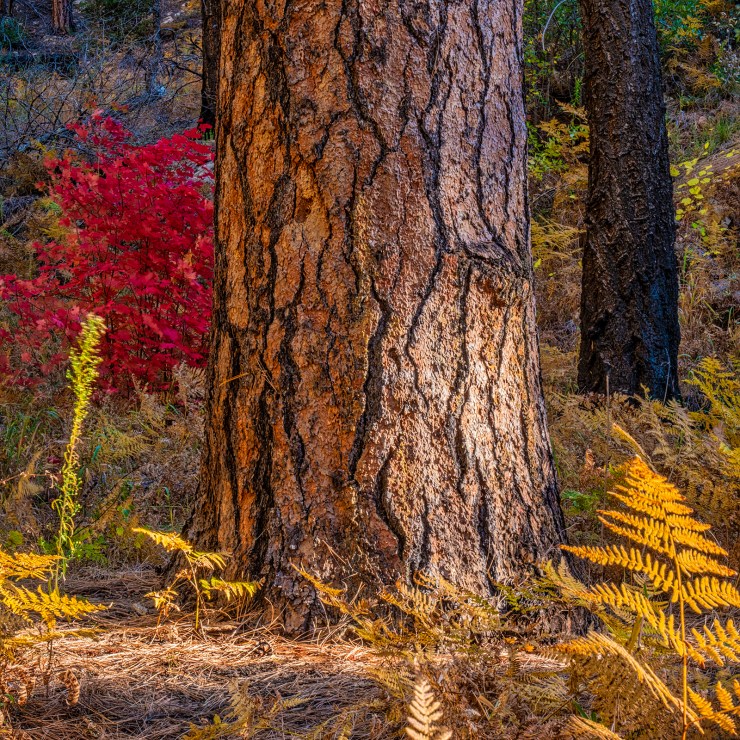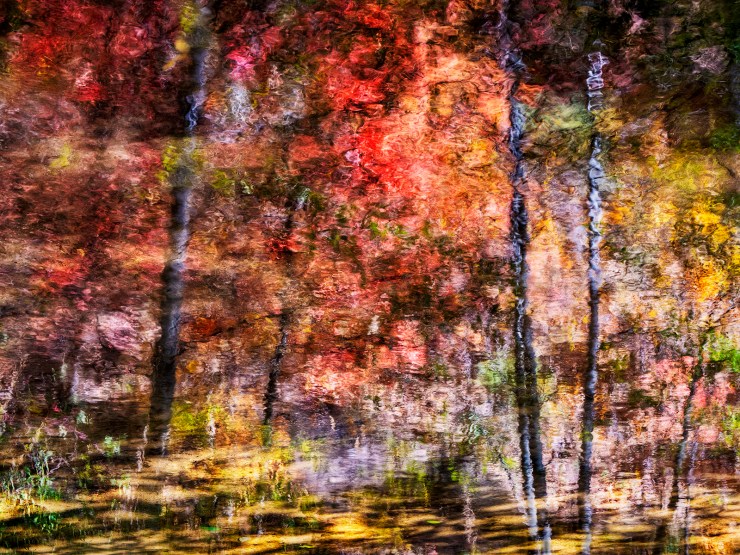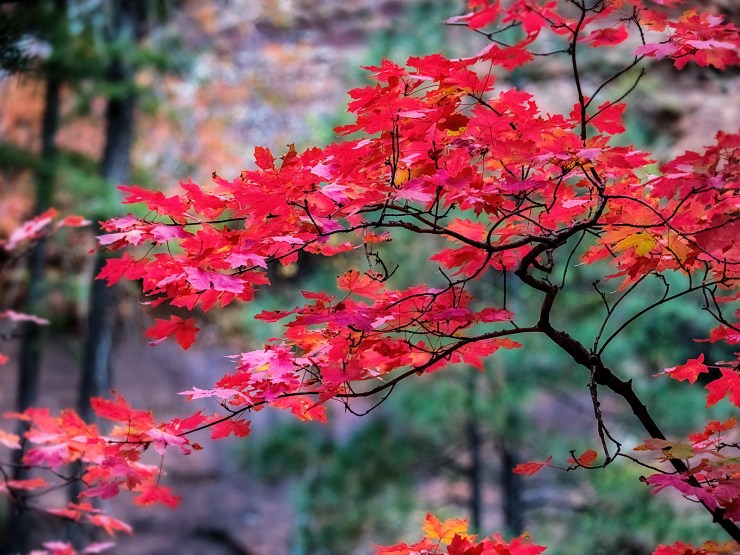Almost everyone enjoys making a solid fall color photo part of their image capture each year. Sometimes you find yourself more successful than others. Here are a few ideas to ensure more keepers.
Be aware of the science
Knowing the science of leaf color change can help you predict better times to shoot. Depending upon your location, you’ll pay closer attention to this starting at different times. Northern climates with higher elevation will fire up color earlier in the season.
Type of trees will determine the color you will get. All leaves need pigments of which there are three main types. Carotenoids produce yellow, orange and brown colors. Anthocyanin fires up the reds. They are water soluble and appear in the watery liquid of leaf cells. Chlorophyll gives leaves a basic green color. It is necessary for photosynthesis, the chemical reaction that enables plants to use sunlight to manufacture sugars for food.
Time of color shift is mainly dependent upon length of night. Shorter nights trigger the change. Rainfall or lack thereof, warmer or cooler temperatures can accelerate or slow the time of color shift and length of time the trees will hold their color and leaves.
Check with others
If you are heading to an area specifically for fall color I highly suggest checking with someone who is there. Eyewitnesses are the best, preferably photographers, as they know when color is looking good for images not just “pretty.”

Many “leaf peeping” towns have reports on their websites. These can be helpful to save you disappointment when color has not quite fired up, or worse, a big windstorm passed through and denuded the trees just before you get there.
Light
Look for the light is an oft used expression for photographers. Many times it can be the difference between and interesting image and one that’s “meh.” In tree laden areas you can often find that little slice of light sneaking through the trees. Watch as sun streaks move as these moments can be fleeting. If you see it, shoot it! It won’t be there long.

Look beyond the color
Sometimes when we get on location we can be overwhelmed by the colors. At least I know I have. There’s a tendency to forget to watch for depth and dimension. You can build it into the image with layers. Foreground, mid-ground and background can turn nice color into a masterpiece.
Also watch for leading lines and diagonals to help move the eye around the photo.
Reflections
Keep your eye out for water. Reflections can be an abstract in still water. Moving water such as a river or stream can really push an image into an art piece.

Depth of field
Isolation of your subject can be as simple as using your lens’ largest aperture, aka the smallest number. The soft bokeh behind can make your subject stand out even stronger making it appear even sharper because of the contrast.

All of these image making techniques can be applied to the fall season. Put them to work and happy hunting!
Yours in Creative Photography, Bob
Tell your story with the second annual Visual Storytelling Conference!
Experience four days of interactive, online training sessions featuring a range of educational content with experienced photographers and content creators. This free event kicks off with a series of technical boot camps to build essential skills, followed by live, online sessions on photography, video, business and social media. Join live from March 10-13, 2022!
